This
post was originally published on
this siteOriginally posted at: http://www.nerdfitness.com/
“She is seriously crushing it.”
When you speak with Emily, it doesn’t take long to realize how proud she is of leveling up her life.
And she should be proud! What she’s accomplished is simply amazing.
Emily, a dog walker from Chicago, had been obese her entire adult life – and it wasn’t like she didn’t try to lose weight.
Emily had attempted:
- 1,200 calorie diets (too low for her)
- 1,500 calorie diets (still too low for her)
- P90x and TurboFire (both way too difficult)
- Jillian Michael videos (boring)
- An abandoned Planet Fitness membership (“I hate treadmills and elliptical machines with the fire of 1,000 suns!”)
Such start and stop patterns continued for years.
Then things changed.
Emily saw that Staci, our head female trainer for our 1-on-1 Online Coaching program, was accepting clients.
She knew it was time to try something different. And this time, things were different.
For starters, Emily, for the first time in her adult life, is no longer obese.
And when she heads to the gym, she crushes it, rocking 195 lb squats, 225 lb deadlifts, and 110 lb bench presses.
Awesome.
While all this is indeed super amazing, the thing I really want to highlight today is Emily’s mindset change.
Because she had tried getting in shape, multiple different ways, in the past.
However, a trap of “perfectionism” saw Emily abandoning all these earlier efforts.
But you don’t need to hear it from me. Let’s bring in Emily!
HOW EMILY LOST 65 POUNDS, LEARNED TO LOVE STRENGTH TRAINING, AND LEVELED UP HER LIFE
 Steve: Hi Emily! Thank you so much for taking the time to chat with me.
Steve: Hi Emily! Thank you so much for taking the time to chat with me.
I’d love to hear from you about your past – Can you take us through a typical day before you started your journey with Nerd Fitness?
Emily: A typical day for me looked something like this:
- I’d wake up and get ready for work. I’d quickly look in the fridge and try to figure out what to bring for lunch. If there was a healthy choice available, I’d grab it, but often I’d just decide to pick up lunch somewhere later.
- Next, I’d go to work walking dogs. When lunchtime arrived, I’d either eat what I brought or stop and grab a sandwich or something at the grocery store hot bar. Then the struggle would begin of avoiding buying chips and/or chocolate.
- After work, I’d head home. I’d think about putting on a workout video, but I’d be tired from my job so the thought “Eh, I’ll just do it tomorrow” would cross my mind. Then, I’d figure out what to make for dinner. Again, I’d try to make a healthy choice, but would potentially give up and order takeout. Then I’d watch TV for a while, have a snack like popcorn or something to eat while watching, and finally off to bed.
I did a lot of living in the moment. It really felt like I was trying so hard all the time, but a lack of planning ahead gave me too many opportunities to slip up.
Steve: Yeah, marketers really do place junk food at every angle in our grocery stores. It really is tough to avoid it all.
Was this the first time you had tried to get in shape?
Emily: Hardly.
I’d tried sticking to 1,200 calories a day for weight loss but just couldn’t do it. I ended up hungry and grouchy a lot.

Later, I tried again and bumped it up to 1,500 calories a day. Same results though, I ended up miserably and abandoned the effort.
As far as working out, I could never achieve consistency. There would be times when I wouldn’t even try and exercise. Other times, I’d try and work out every day. But I never felt good about what I was doing.
I gave the P90x and TurboFire programs a shot, but they were too tough for me.
I tried some Jillian Michaels videos but got bored.
I joined Planet Fitness, but it turns out I hate treadmills and elliptical machines with the fire of 1,000 suns. I tried their weight machines too, but it felt really awkward.
Going through all this has taught me a valuable lesson: if you don’t like what you’re doing, you probably won’t continue to do it.
Steve: You’re 100% right! We often tell people to exercise in a way they love and to do that as much as possible. That, and also strength training.
But since you’re working with Coach Staci, I’m sure we’ll get to more of that soon.
Was there a specific moment when you decided to ask for help?
 Emily: There was.
Emily: There was.
I had just hit my highest weight ever. I was on the couch crying, looking through the subreddit r/progresspics (where people post before and after photos), and I was so frustrated.
I felt like I was constantly trying to lose weight, making lots of good choices while still getting nowhere. I had been a member of the Nerd Fitness Academy for a while and had leveled up a lot of my choices, but the weight loss just wasn’t happening.
Then, I saw that Staci was accepting clients for 1-on-1 Coaching, and decided to sign up.
Which has been a game changer.
In the past, I had a tendency to pick a shiny new program, try hard to be perfect, fail and burn out, and give up for a while until I found another shiny new program.
Staci really helped me focus, pick myself back up when I fell, and keep going.
Steve: I’m so happy to hear you hit it off with Staci.
Can we talk a little bit more about your “perfectionism?” I think jumping from one program to the next is something a lot of people can relate to.
Emily: Yeah, my perfectionism was really holding me back.
I used to set ridiculously impossible goals. I’d do okay for a bit, then I’d have an eff it moment and eat half a package of Oreos. From there I’d spend the next two weeks spiraling in shame and frustration, wondering why I can never seem to stay on track.
Then I’d vow to get “back on the wagon” and the cycle would begin all over again.
I had to start where I was and learn to set teeny tiny incremental goals. Goals that I could still do even when everything felt impossibly hard. Goals like:
- “Buy one vegetable and eat it before it goes bad”
- “During meal times, drink water”
- “Even when I overeat, still log it as best I can.”
I had been trying to jump into a healthy lifestyle with both feet, when what I really needed was to baby-step my way there.

So looking back, the most important change I’ve made is focusing on consistency over perfection:
It doesn’t matter if my food log isn’t absolutely flawless, just that I log all my food as best I can each day.
It doesn’t matter that every workout isn’t the most incredibly hard-core workout ever, just that I actually get myself to the gym three times per week.
Keeping myself moving forward even when I feel like giving up is the absolute most important thing.
Steve: Yes! You nailed two key points: Often it’s easier to make small habits you can stick with instead of changing every single aspect of your life all at once.
The other is that consistency is the name of the game. No one is perfect, but a key characteristic of success is to keep going. Your response highlighted both ideas perfectly.
What’s your workout program look like? What is Coach Staci having you do?
 Emily: Strength training.
Emily: Strength training.
I lift weights on Tuesday, Thursday, and Sunday mornings first thing.
I also go to yoga class on Monday after work.
I LOVE lifting, it makes me feel like such a badass. Once I picked up a barbell for the first time, I was like “Okay, this is it. I found my favorite thing to do.”
I’ve gone from basically just lifting the bar to a 195 lb squat, a 225 lb deadlift, and a 110 lb bench.
Steve: I don’t know if you can fully understand how happy you just made me! I’m so pumped that Staci helped you find a love of strength training.
Talk to me a little bit about nutrition. What have you done differently? What strategy are you following?
Emily: Since I was constantly hungry when cutting calories before, we knew we had to keep my volume up. Which meant eating vegetables to meet my calorie goals.
But I was convinced I didn’t like veggies. However, I decided to start an experiment. Every week I would pick up a vegetable I thought I didn’t like, and try cooking it a few different ways. If at the end of the week I still didn’t like it, that’s fine. I wouldn’t buy it again.
The thing is, I found I actually DID like a bunch of different veggies. I just didn’t like the kind forced on me as a kid: boiled to death and soggy with no seasoning.

Another thing that helped was making a food plan ahead of time. Planning helped me restructure my life and make the healthier choice easier, and the less healthy choice harder.
For example: let’s say it’s Thursday evening after work. I had a hard day and I’m hungry, grumpy, and tired. I know that I’ll make the easiest choice available at the moment:
Emily With No Plan hasn’t thought ahead, as though it’s a surprise that she has to feed herself every day. She could either figure out a healthy meal to make, probably have to swing by the grocery store and pick up ingredients, come home, prep everything and cook. Or, she could order delivery. Honestly, she’s probably going to order delivery.
Emily With A Plan is prepared! She previously decided that dinner is chicken fajitas. There’s chicken thawing in the fridge and the veggies are washed, chopped, and ready to go. In the moment there’s no tough decision to make. Plus, it’s faster to just make the fajitas. She’s probably not ordering delivery.
I’ve used this strategy a lot.
I ate a ton of chips, so I stopped buying them. When I wanted them I would have to go to the store and buy a single serving. That’s a lot of work for like 10 potato chips.
I ate a lot of cookies too, so I decided “I no longer keep store-bought cookies in the house.”
If I want them I have to make them from scratch. I’ve actually made them only a handful of times since implementing this rule, which has drastically reduced my cookie consumption. Shifting the regular structures of my life in this way has allowed me to use my laziness as an advantage. If I make unhealthy choices too much work, I’m WAY less likely to choose them.
Steve: That’s incredible. I made that same exact point in a recent article, “Super Simple Batch Cooked Chicken For Lazy People.” You really distilled down the argument on your example of fajitas.
Also, your strategy on learning to like veggies is the exact one I used! Great work all around.
What’s a typical day for you like now?
Emily: A typical day for me now:
- If it’s a gym day, I wake up at 5:30am and go lift. I then run home and get ready for work. Otherwise, I wake up at 7:30am. I grab the lunch that I prepped over the weekend from the fridge and head out the door. (Or, if I’m intermittent fasting, skip this step).
- Then it’s time to go walk some dogs for a while, and then I eat my lunch between visits.
- When I get home, I’ve planned the whole week’s dinners over the weekend and have all the groceries I need already. No need to make a decision, I just make what’s planned.
- Post dinner, it’s hanging out with my husband time. But no snacking. Then off to bed.
Planning ahead and setting up healthy habits has helped me so much:
I don’t have to decide what’s for lunch or dinner, because that decision was already made.
I don’t have to white knuckle my way past junk food at the grocery store while picking up dinner ingredients because they’re already in the fridge.
I don’t have to decide to work out, because gym time is blocked out on my calendar. If it’s time to go to the gym, I just go.
No decision, no skipping because I don’t want to, no internal drama. Just go. That also means when it’s not gym time, I don’t have to think about it or feel guilty that’s it’s been too long since I last worked out. I’ve set up the structure of my life to support healthy habits and remove opportunities for unhealthy behaviors.
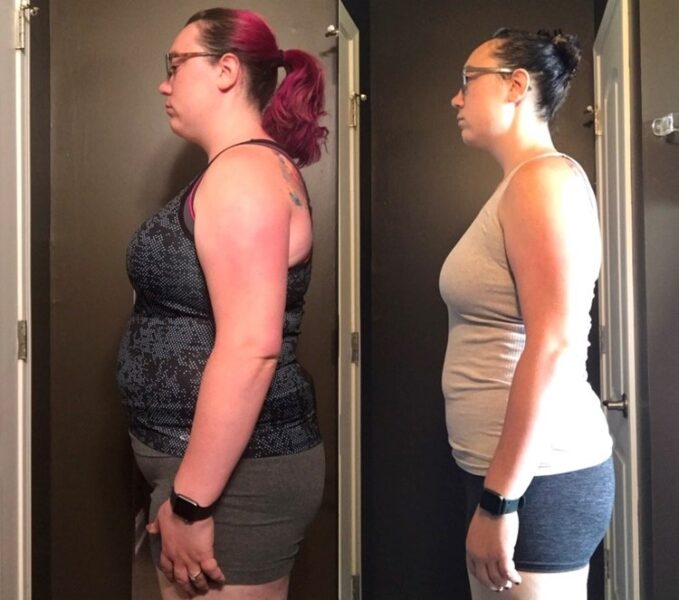
Steve: You really are crushing it Emily. Both you and Coach Staci should be very proud.
Your appearance has changed? What else has changed about you?
Emily: I have completely changed.
You’re right, how I look has obviously changed, but I’m also way more confident now.
I’ve proven to myself that I can do what I once thought was impossible. I can look my flaws square in the face and learn from them instead of running from them.
I can rebuild my life from the ground up. I’m more assertive now instead of letting people walk all over me like I used to do. I’m way more energetic than I ever was before. And I’m more social because I have the energy to go out and do stuff.
I even sleep better.
I’m like an entirely different person.

Steve: I’m so happy to hear that. We often talk about how one improvement in life can lead to another, and then another, creating a chain reaction.
I’m so happy you feel more confident as a result of your new habits.
Okay, real talk: NF Coaching isn’t cheap. You’ve been a client for a year and a half. What makes you stick with it and keep investing in yourself?
Emily: Coaching has definitely been worth the investment.
Just knowing Staci is there in my back pocket, that she believes unequivocally I can do it, and she’s there with me every step of the way has been invaluable.
She keeps me grounded and focused. She keeps me from getting distracted by shiny new programs. And when things get rough and I start to get overwhelmed, she helps me keep things in perspective and just keep trucking along.
Interestingly enough, I’m actually better off financially now than I was before Coaching.

Managing my calorie budget has helped me with my financial budget – there’s a ton of overlap. It’s helped me hone my long-term planning skills.
Practicing the skill of not eating junk food even though I want it has helped me sharpen my ability to not buy things I don’t need. Both require trying to get the most out of limited resources. Both require putting long term goals before short term desires.
Steve: I totally believe it. The financial and calorie budget analogy and overlap makes a lot of sense to me. You’re a clever one, Emily, and you’re okay in my book!
Alright, I’ve got to ask: do you have any nerdy passions or pursuits?
Emily: I read a ton of fantasy and sci-fi. My favorites are Name of the Wind, The Lies of Locke Lamora, and Way of Kings. I’m in three book clubs. I also love playing board games.
I consider myself a Trekkie, but have also cosplayed as Kaylee from Firefly.
Lastly, I just started playing D&D for the first time – my character is a kick-butt Druid.

Steve: A love of fantasy and sci-fi, cosplaying experience, and repping a D&D character: your nerd credentials are in proper order. We may proceed.
What’s next for you Emily? Where do you go from here?
Emily: Two main goals:
- Continue with weight loss: next stop is a healthy weight!
- Keep getting stronger. As I said, I’ve been lifting for a while now and I love it! Next big goals are 200 lb squat, 250 lb deadlift, and being able to do a chin up.
Steve: I have no doubt you will rock a chin-up soon. You’ve been crushing everything else you’ve sought after.
Best of luck Emily! And thanks again for taking the time to share your story with all of us!
THE 6 KEYS TO EMILY’S WEIGHT LOSS AND LEVEL UP SUCCESS
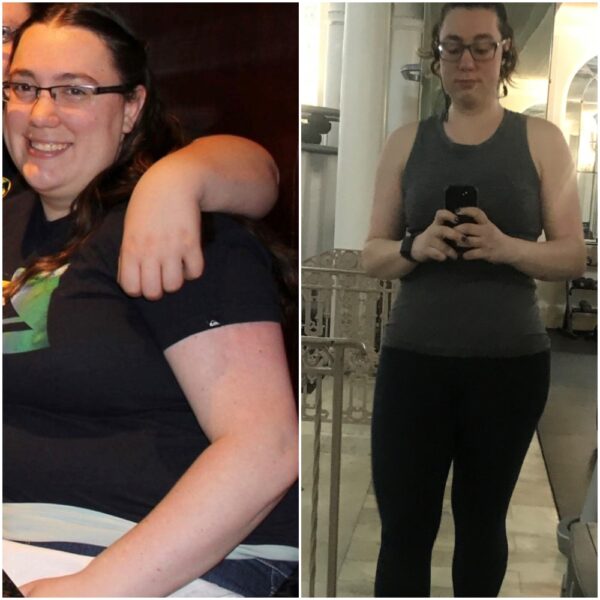
We can all learn a lot from Emily.
Losing weight and transforming yourself is tough. When someone around us does it, it’s worth analyzing their behavior to see if any lessons can be gleaned for the rest of us. Something we can ponder, and then take action with ourselves.
Emily’s journey provides plenty of good examples. In speaking with her, I distilled six key traits that set her apart. Six behaviors that helped Emily succeed despite the odds against.
Here’s what we can learn from Emily:
#1) EMILY DIDN’T GIVE UP
 Emily had been trying to lose weight for years:
Emily had been trying to lose weight for years:
Restricting caloric intake to super low levels? Check.
Running mindlessly on treadmills? Check.
At home workout videos? Double check.
She tried all of it. And she didn’t like ANY of it.
So she’d move onto the next “shiny new program.”
What’s important is Emily never gave up. She kept trying new things.
Then, when she started working with Nerd Fitness Coaching, she tried something different: picking up a barbell.
Now, Emily loves strength training and feels like a badass for doing it.
There’s no ONE way to get in shape, and Emily finally found something she loves and will stick with.
The important thing is Emily kept trying until she got it right. Speaking of…
#2) EMILY IS WILLING TO EXPERIMENT
 I love Emily’s willingness to experiment with vegetables.
I love Emily’s willingness to experiment with vegetables.
Vegetables are nutrient dense, full of fiber, and low on calories.
If you’re trying to eat within your calorie goals, but don’t want to be “hungry and grouchy” the whole time, vegetables will be key.
Emily was convinced she didn’t like vegetables. But she decided to test her assumptions and try some out. She did this by picking out one new veggie a week.
If she cooked it and hated it, no big deal. She wouldn’t force herself to eat it again. But if she liked it…BOOM! A new vegetable could be added to the menu.
Emily discovered she liked many different kinds of vegetables, as long as they were prepared correctly.
Be open to experimentation. Try new things. Not everything you experiment with has to work. But some things you try just might.
#3) EMILY BUILT A SYSTEM AND HAS A PLAN
One of the true gems of Emily’s interview comes from the “Emily With No Plan” and “Emily With A Plan” comparison.
She really nailed it. When you have a plan, like prepared meals for the week, you take all the guesswork out of “what should I eat?” Dinner time, which comes around every day, doesn’t have to be a surprise.

Emily knows exactly what to eat because she planned it out over the weekend. And she never has to stress about not having supplies, because she picked those up too over the weekend.
When it comes time to figure out what to eat, the easiest option available to Emily is the healthy meal she has planned for.
The same strategy can be seen on her workout schedule:
Tuesday morning? She’s up early crushing it at the gym.
Wednesday morning? She’s sleeping in.
Emily never feels guilty about waking up late, because it’s all part of her plan. Wednesday’s are her day to rest. The gym will be calling tomorrow.
Make a plan. Put it on your calendar. Make your healthy habits automatic instead of worrying about what to do from one moment to the next.
#4) EMILY DIDN’T LET PERFECT BE THE ENEMY OF GOOD
In the past, Emily had let “perfectionism” derail her efforts.
In her own words, Emily would find a “shiny new program.” She’d go all in, excited about her new endeavor.
Then…life would happen. She’d miss a workout. She’d eat some Oreos. She’d order takeout.
When this would inevitably happen, she’d have an “eff it” moment. Emily would abandon everything and “then spend two weeks spiraling in shame and frustration.”
Then, she’d try again, have another “eff it” moment and the cycle would repeat.
But not anymore.
Today, Emily is consistent. If she wants to have some cookies, it’s okay! She knows tomorrow it’s back to strength training and the chicken fajitas she has ready to cook.
No one is perfect. We all have moments where we stray from the path. The important thing is to not let one decision affect all future decisions:
Don’t let some potato chips today stop you from going to your yoga class.
Don’t let sleeping in and missing a workout this morning stop you from cooking dinner tonight.
Don’t let “perfect” be the enemy of “good.”
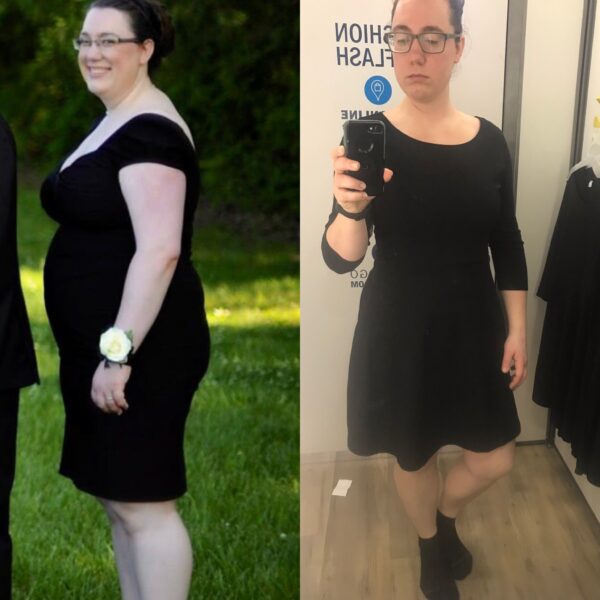
#5) EMILY INVESTED IN HERSELF AND ASKED FOR HELP
Emily had tried to get in shape many times before.
And Emily had stopped trying just as many times.
When Emily saw that Staci was accepting clients as part of NF Coaching, she decided to try again. But this time, she would ask for help.
It’s okay to ask for help. Even if you have to invest your time or money to do so.
You are not the first person to want to get in shape. Emily is not the first Rebel to transform herself. What makes them successful varies from person to person, but oftentimes it’s that they reached out for assistance.
It’s okay to ask someone for guidance. Someone who has helped others do exactly what you want to do.
Yes, you will most likely have to pay for this expertise. But oftentimes, it is indeed worth every penny.
I’ve personally had an online coach for 4 years, someone who knows exactly how to help me reach my goals, and it’s the best investment I’ve ever made.
Remember, you don’t have to make this journey alone.

#6) EMILY IS HAVING FUN ALONG THE WAY
I know it’s cliché, but getting in shape really is a lifestyle adjustment. Meaning this isn’t something you do for a week, a month, or even one year.
It’s something you will do for the rest of your life.
For this to work, you need to enjoy the journey ahead.
And Emily is enjoying herself!
She feels like a total badass when she deadlifts. And she should, because doing deadlifts is badass.
Emily doesn’t dread picking up the barbell. She looks forward to it.
That means she’ll keep doing it!
Emily takes a yoga class because Emily likes taking yoga classes.
Emily makes chicken fajitas because Emily likes chicken fajitas.
Emily occasionally makes homemade cookies, because occasionally Emily likes making homemade cookies.
You need to enjoy what you do, otherwise, you won’t stick with it. You need to have fun today, so years from now you’ll still be doing it.
It’s a message I really push in the video “Want to get in shape? Think in days and years, not weeks and months”
We are not making temporary changes, because they will only create temporary results. We are making permanent changes, so our transformations will be permanent.
HOW WILL YOUR NEXT ATTEMPT BE DIFFERENT? BE LIKE EMILY

I’m super proud of what Emily and Coach Staci have accomplished.
And if you’re still reading this, I want you to know I’m proud of you too.
You’re still reading, which means you’re still trying (see #1). You found your way to our strange corner of the internet and you’re part of the Rebellion.
I’m so happy you’re here today.
We’ll continue to be here for you tomorrow, next month, and years from now.
No matter where you are on your journey, I would encourage you to think about what made Emily successful:
- Don’t give up. Keep trying, keep reading. But try something different! If going full Paleo didn’t work out, try cooking one new vegetable a week as Emily did.
- Experiment. Do you always shut your alarm off in the morning and skip the gym before work? That’s okay, you’re simply not a morning person. Try going to the gym in the evening – or try working out from home. It’s okay to try new things. Sometimes it takes many attempts before something “clicks.”
- Have a plan and build a system. Batch cooking has changed my life and many other Rebels as well. It works because it’s part of a system designed to ensure I have a healthy meal whenever I’m ready. Plans and systems will outperform “motivation” every time.
- Don’t let “perfect” be the enemy of “good.” Unless this site has been archived after the robot revolution, all of us are human. Meaning all of us are imperfect and flawed. That’s okay. Don’t let one inevitable slip up derail you for weeks. That’s where the real harm comes in.
- Ask for help. Some people can completely change their lives on their own. Most can’t. If you have access to someone who knows exactly what to do to help, reach out. Most of us need a Yoda to become a Jedi.
- Have fun. Embarking on a change that makes you miserable is a sure fire way for future abandonment. This is a lifelong journey, so discovering things you enjoy is critical.
If you found yourself relating to Emily’s story, jumping from “shiny new program” to “shiny new program” without getting the results you’re after, maybe it’s time for something different.
Depending on your current situation, our 1-on-1 NF Coaching Program might be the droids solution you’re looking for. You can learn more by clicking on the box below and scheduling a call with our team!
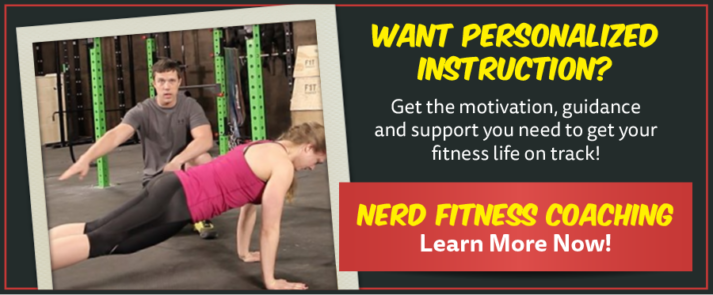
No matter what you do, here’s what I want you to take away from Emily’s story:
- Having someone rooting for you is invaluable. It could be a coach, but it could also be a friend, a family member, or a co-worker who’s also trying to get in shape. If you can find a teammate, find a teammate.
- If you’re having trouble with your nutrition, look into meal planning. It was a game changer for Emily and it’s been a game changer for me.
If you do those two things, I can almost guarantee you’ll be a healthier version of you in 12 months. Then maybe it’ll be your story on the website we’ll be sharing. And hey, maybe your journey will inspire change in someone else!
-Steve
PS: I want to give a special shoutout to Coach Staci, who helped turn Emily’s life around. Staci has guided and inspired hundreds if not thousands of Rebels and we are very lucky to have her on Team Nerd Fitness.
If you want to see if we can help you level up your life, check out our 1-on-1 Coaching program. We’d love to talk to you, no matter what you end up deciding.
 What Does Bottoms-Up Mean?
What Does Bottoms-Up Mean? 3. Polish Your Positioning
3. Polish Your Positioning Learning to ramp up tension (or dial it down) and truly feel the integration of the core musculature with movements like squats, presses, and carries can be challenging for some. The challenge of the bottoms-up position teaches the necessity of “meeting the tension to the task” (a phrase coined by Antony Lo, PT).
Learning to ramp up tension (or dial it down) and truly feel the integration of the core musculature with movements like squats, presses, and carries can be challenging for some. The challenge of the bottoms-up position teaches the necessity of “meeting the tension to the task” (a phrase coined by Antony Lo, PT). Consider this as you might a plank: start with 10 or so seconds and aim to work your way up to being able to breathe and balance the bell for 30–45 seconds each side before adding more complexity.
Consider this as you might a plank: start with 10 or so seconds and aim to work your way up to being able to breathe and balance the bell for 30–45 seconds each side before adding more complexity.

 The relationship between stress and carbohydrates is confusing, with seemingly contradictory arguments bouncing around the online health sphere.
The relationship between stress and carbohydrates is confusing, with seemingly contradictory arguments bouncing around the online health sphere.
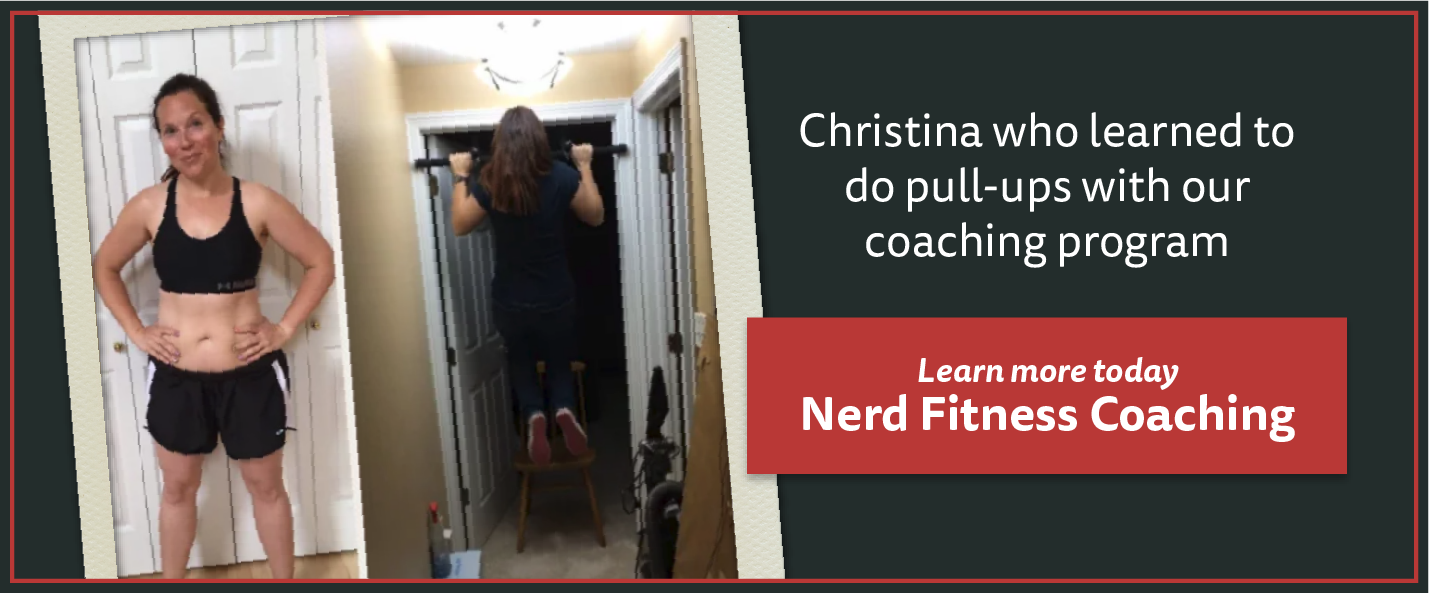
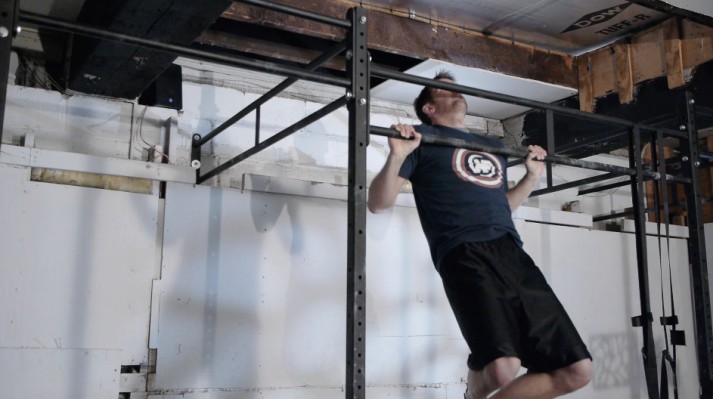

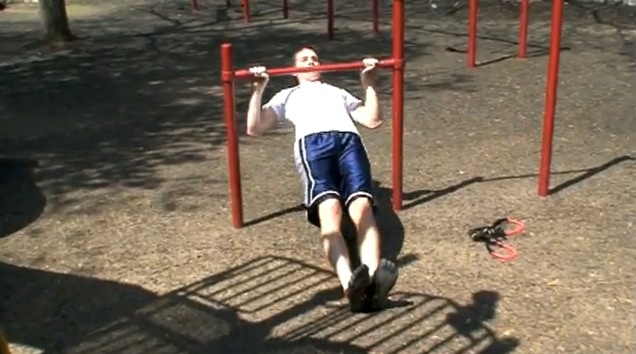





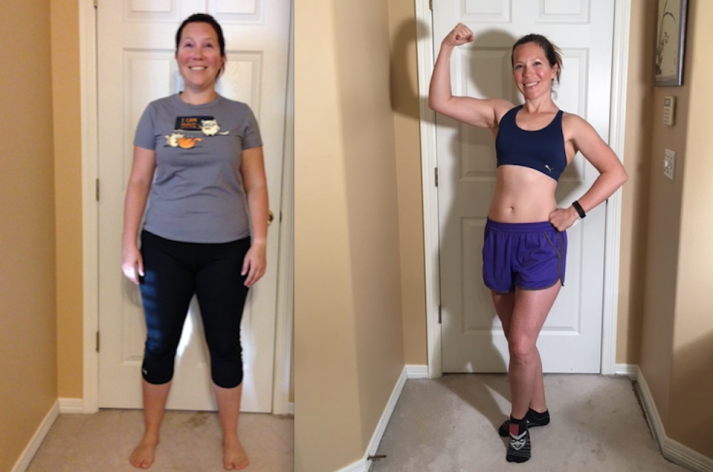



 Steve: Hi Emily! Thank you so much for taking the time to chat with me.
Steve: Hi Emily! Thank you so much for taking the time to chat with me. 
 Emily:
Emily: 
 Emily:
Emily: 





 Emily had been trying to lose weight for years:
Emily had been trying to lose weight for years:  I love Emily’s willingness to
I love Emily’s willingness to 





 Some people just don’t do milk.
Some people just don’t do milk.
 For now classes are 6pm and 640pm at 2840 Wildwood st in the Boise Cloggers studio.
Book your class NOW!
click this ==>
For now classes are 6pm and 640pm at 2840 Wildwood st in the Boise Cloggers studio.
Book your class NOW!
click this ==>








